Etel Adnan
12 September – 28 October 2012
Callicoon Fine Arts, Manhattan
Roughly fifteen miles north of San Francisco, across the city’s iconic burnt-orange Art Deco masterpiece, is Mount Tamalpais, another Bay Area icon. In the surrounding areas of this unassuming mountain lived the Coastal Miwok Indians—a now landless people—who (as popular legend would have it) once claimed that an evil witch lived atop its peak in order to deter early European settlers from scaling its heights. It is also said that Mount Tamalpais was home to the Miwok coyote creator-god, who shook his blanket in each cardinal direction and brushed aside water in order to reveal dry land, fashioning his descendants out of that same earth.
For Lebanese-born cultural figure Etel Adnan, who has maintained a residence near this mountain since the 1950s, its name is derived from the intertwined histories of two opposite views of the same referent landmark, the differences between “the native and the conquer.” “The Indian called the Mountain Tamal-Pa, ‘The One close to the Sea.’ The Spaniard called it Mal-Pais, ‘Bad Country,’” writes Adnan in her 1986 essay Journey to Mount Tamalpais (The Post-Apollo Press). This ode to her enduring muse was published after more than two decades of painting, drawing, and contemplating its terrain, where the renowned artist, poet, and writer of Syrian and Greek origins first experimented with the visual arts at age thirty-three.
There, in Marin County, Adnan was encouraged to paint by artist Ann O’Hanlon, who was the head of the art department at Dominican University of California (formerly Dominican College). Adnan taught philosophy at the private institution for years and it was through O’Hanlon that she became part of a tight-knit circle of artists that converged around the mountain, living and working at its base while drawing inspiration from its gentle yet stoic reign. Richard O’Hanlon, Ann’s husband, was also an artist—one who assisted Diego Rivera on his 1931 San Francisco Art Institute mural while still a student. The couple owned a large plot of land at the foot of Mount Tamalpais, which they turned into the Sight & Insight Art Center in 1969, a creative colony of sorts that is now the non-profit O’Hanlon Center for the Arts. Shortly after she began painting in 1958, Adnan shifted her focus to the ascending shadowy mass that stands as the natural compass of the peninsula.
Last month, at Callicoon Fine Arts in Manhattan, a selection of her Mount Tamalpais paintings were highlighted in the artist’s first solo show in New York. These intimate works were included in a more extensive presentation at this year’s dOCUMENTA (13), the international art world’s hippest grand event (which takes place every five years and is geared towards the intellectual set).
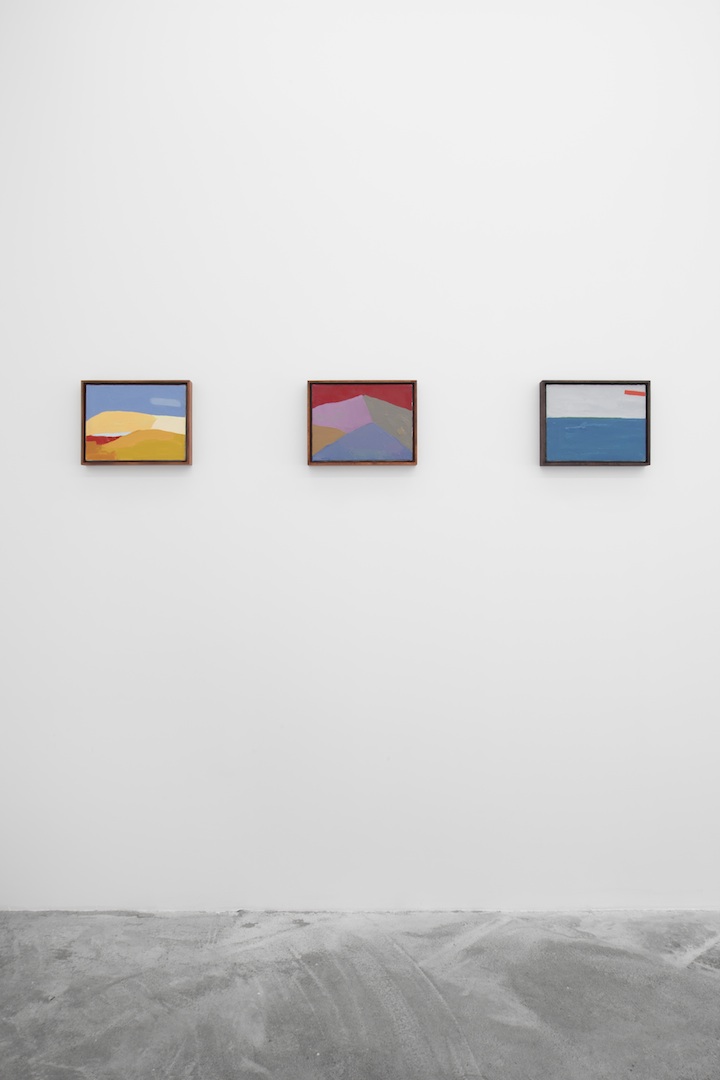 [Installation view of the exhibition at Callicoon Fine Arts. Image courtesy of the gallery.]
[Installation view of the exhibition at Callicoon Fine Arts. Image courtesy of the gallery.]
To most, she is known for her exquisite writing: her many volumes of poetry, a recent award-winning series of essays accompanied by drawings, and the 1978 Lebanese civil-war era novel Sitt Marie Rosie—to list a few. She is also revered for accordion art books that are based on the Japanese tradition; delicate pieces that unfold to reveal her handwritten transcriptions of poetic texts—the style and format of which have been emulated by a number of contemporary Arab artists. But there is another side to her decades-long output, one that is anchored in the Bay Area with her longtime partner (and frequent publisher), the equally accomplished artist Simone Fattal.
Among the vibrant colorist works that comprised Adnan’s exhibition in the Lower East Side was a pronounced aesthetic leaning and an indication that her subject matter, while based on actual scenery, is representative of something more; or as Octavio Paz so aptly determined, “a landscape is not the more or less accurate description of what our eyes see, but rather the revelation of what is behind visible appearances” (Alternating Current, Wildwood House Limited: 1974).
In the artist’s untitled paintings that were created over a five-year period beginning in 2000 that landscape is distinctly Californian. Rendered with the coarse application of palette knife, which traces the movement of her labor with marked tactility, the outline of the mountain (or the ocean in some cases) appears at the moment when colors meet—when fields of gold, blue peaks, and a red sky equalize and carry the weight of each other. These hues not only function as affecting sparks as they are bathed in light, they are independent forces.
 ["untitled" (2000-05). Copyright Etel Adnan.]
["untitled" (2000-05). Copyright Etel Adnan.]
Adnan’s gamut of color is reminiscent of other California artists such as Richard Diebenkorn, yet she is not interested in the flat aerial swaths of the “Ocean Park” series that distinguish the well-known painter. Texture is visible in her work. Moreover, Diebenkorn’s palette has much in common with the 1920s and 30s landscape painters of the area, particularly Maynard Dixon (who, from 1920 to 1935, was married to acclaimed photographer Dorthea Lange, a chronicler of some of the state’s most oft-ignored scenes). In studying the semi-social realist compositions of Dixon, the reserved, abstracted forms of Diebenkorn, and the carefully (de)constructed naturalist bodies of Adnan—a question can be posed: Do views of California really bear such effervescent tones?
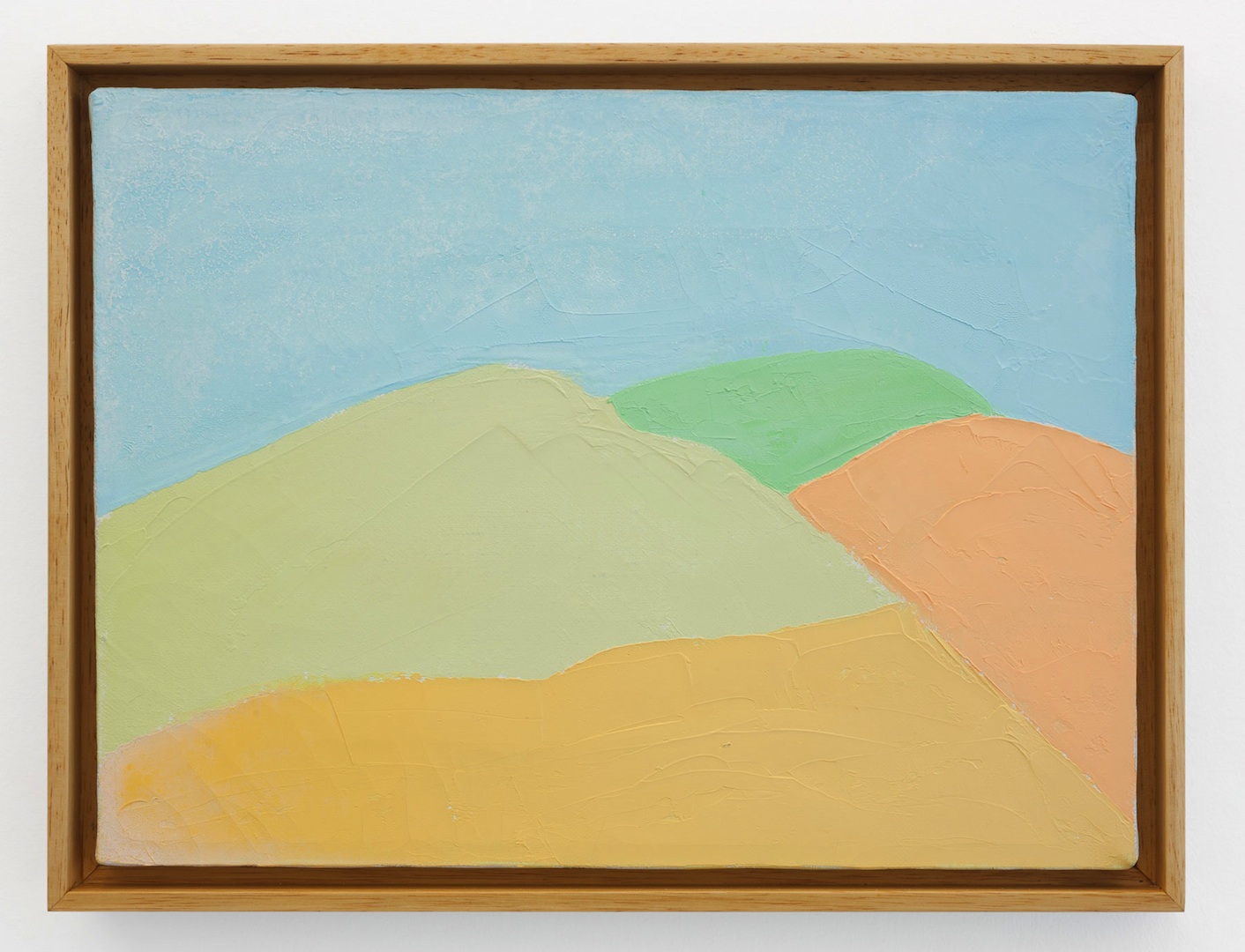 ["untitled" (2000-2005). Copyright Etel Adnan.]
["untitled" (2000-2005). Copyright Etel Adnan.]
The history of art in this West Coast locale is centuries old. Prior to the arrival of Spanish invaders in the 1500s, its Indigenous peoples, although diverse in language, shared a number of common practices, most notably their abundant execution of functional and ceremonial objects that forged a broad visual culture. Basket weaving—with its rigorous patterns and designs and highly developed treatment of raw materials—was the core unifier of their multifaceted practices, all of which related to the available resources of specific environments (coastlines, deserts, mountain regions, or valleys). Although the imposition of missionary rule and the later US takeover of the state in 1850 were apocalyptic to Indigenous societies, their traditional arts were able to remain intact, assuming new elements as general art making techniques progressed.
As the editors of the invaluable survey Made in California: Art, Image, and Identity, 1900-2000 (University of California Press: 2000) relate, with such battles over ruling the state came parallel pursuits of defining how its land, people, and culture(s) were represented.
Early missionary meditations on its varied natural setting as a prosperous new world provided the foundation for local landscape painting. Under US governance, such depictions were expanded into the 1900s with the thrust of emergent economies: gold mining, “pioneer” settlements, agriculture, tourism, the film industry, etc. Institutionalized racism and xenophobia, reflecting national agendas, simmered with increased control over California’s capital under white-owned industries. This all came at the expense of the Native population and with the overall sidelining of non-white communities. Images of poppy-covered hills, coasts adorned with gnarled cypress trees, and majestic Yosemite vistas were intentionally depicted as uninhabited, pointing to an all-too-familiar “land without a people” dictum (see Sheri Bernstein’s “Selling California: 1900-1920,” Made in California).
A schism materialized in this genre of painting when Modernism seized the local art scene and two notable camps of artists took to navigating its scenery. A number of plein air painters continued along the same path of creating depopulated pictures, yet such outlooks didn’t always signal big-business-sanctioned fantasies. If anything, World War I and the Great Depression left behind profound cynicism, causing many painters to find solace (and search for answers) in pristine views (see Steve Hauk’s “Painting the Human Landscape,” This Side of Eden: Images of Steinbeck’s California, National Steinbeck Center: 1998).
Others began to address social issues in their work and in doing so incorporated the realities of disillusioned residents into California’s nature-based imagery. Several factors contributed to this break, among them was the influence of the Federal Art Project under the Works Progress Administration (WPA) and its model the Mexican Muralist movement (the “big three” of which created significant frescos in California; Diego Rivera to the north and Jose Clemente Orozco and David Alfaro Siqueiros to the south) with more politically-geared works popping up in the interiors (and on the exteriors) of public buildings and spaces.
Magnifying such visuals was the popularity of certain writers, namely John Steinbeck, whose timeless stories set out to dispel the utopian myth. The laden stage where his dramas unfold is based on the Central Coast, where he was born and raised—the mountains, hills, and valleys that, although analogous to the origins of life in their offering of sustenance, are forever tainted by man’s inability to humble himself before such forces. As Steinbeck exposes the class divisions that encase the dysfunction of American social institutions, the misfortunes of his most approachable protagonists manifest in betrayal and alienation—the fates of entire communities in real time.
Widespread deportation of Mexican-Americans, the internment of Japanese-Americans during World War II, and attacks on labor organizing made up but a fraction of the contested political events and policies that spurred a pressure-cooker explosion two decades later as a subsequent generation of Californians partook in the mass upheavals of the 1960s and 70s. The converging (and diverging) ideologies of anti-war protests, “second-wave” feminism, and the Black Panther Party (which inspired similar movements among Indigenous, Chicano/a, and Asian-American youth) all impacted the visual arts, as did new forms of expression that were instep with California “counterculture” and cultivated (to a lesser extent) in response to the state’s increased militarization, which began in World War II when it became an industrial center for the US Armed Forces. Local performance art and earthworks, for example, were often tied to an aggravated sentiment that questioned the links between mainstream visual culture and American hegemony while seeking to understand California in its entirety, including its relationship to the land, which by then was imbued in history as a political battleground.
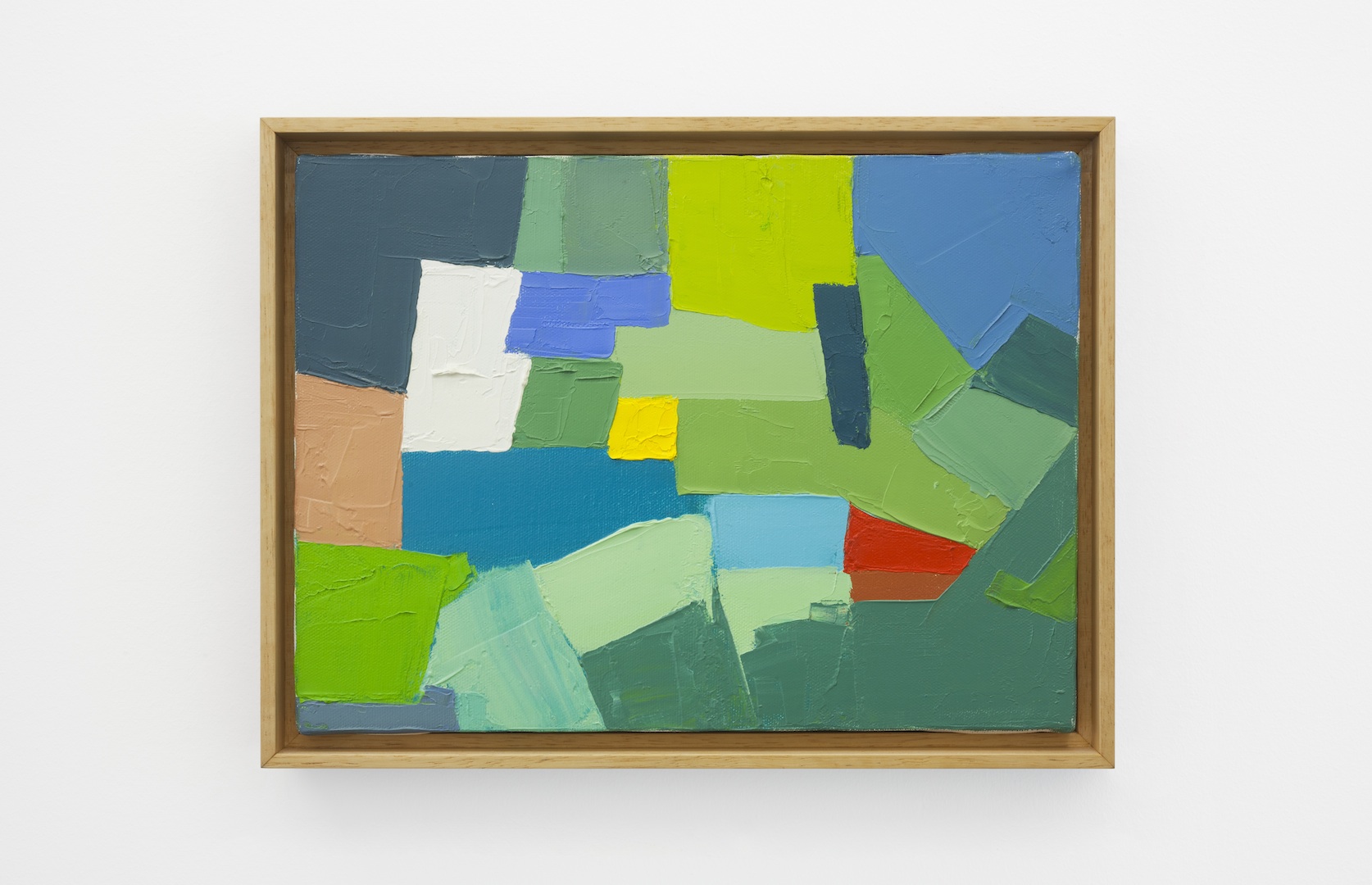 ["untitled" (2000-05). Copyright Etel Adnan.]
["untitled" (2000-05). Copyright Etel Adnan.]
In The Woman Artist in Lebanon the late Helen Khal suggests that Adnan’s painting is the direct result of the creative environment that she encountered when first arriving to the US. Khal, a Lebanese-American who moved to Beirut in her adolescence and was part of the city’s famed cultural scene prior to the civil war as a painter, gallerist, and writer, insists that “In this [American] climate of intellectual and artistic revolution, Etel found stimulation and encouragement to venture into unexplored fields” (Institute for Women’s Studies in the Arab World: 1987).
Among the insights of Journey to Mount Tamalpais, Adnan reveals her place within the dynamism of the 1960s “experiment”:
The early workshops participated of the newness of the world. Yes, they were at the beginning of the Sixties, yes, they participated in the prophetic spirit of a decade which has its equals in History in the Pre-Socratics, or closer to us, in the decade which preceded the Russian Revolution and was made by Malevich, Tatlin, Kandinsky.... This time a whole nation was again being involved in a Great Experiment, unabashedly, through street marches, music, songs, underground movies, and millions of silent events which tried to uproot a culture and plant a new one, a new forest.
A gradual move towards “Perception” was augmented during this time through studied observations of her Sausalito surroundings:
Ann O’Hanlon, who started it all, says: `To perceive is to be both objective and subjective. It is to be in the process of becoming one with whatever it is, while also becoming separated from it.’
To apply this metaphysical approach to painting is to venture back through the philosophical path of Modern art to its early twentieth-century dawning, arriving at the abstract compositions of German-Swiss painter Paul Klee who argued that an artist’s “sense of direction in nature and life” was derived not by serving or ruling “this world of variety” but by transmitting it. For Klee, this sense brings about order “into the passing stream of image and experience.” To distort natural forms through art is to provide the location wherein nature is reborn:
The Deeper he [the artist] looks, the more readily he can extend his view from the present to the past, the more deeply he is impressed by the one essential image of creation itself, as Genesis, rather than by the image of nature, the finished product. (On Modern Art, a lecture given in 1924 at the opening of the Museum of Jena)
Color, according to the European modernist, can unlock such transmissions, offering “tremendous possibilities for the variation of meaning” when color fields are combined and/or contrasted. This supporting principle of abstraction is found in Adnan’s paintings.
Amidst the illuminated masses that descend onto her picture plane, there appears to be a spiritual dimension to the kinship that she developed with her organic monument; more precisely, “Perception” as a method of seeing is “a laser beam which destroys in order to assimilate, it is an exchange of energies”:
Now the clouds are grandiose and turbulent. An autumn storm is coming. Whatever makes mountains rise, and us, with them, makes colors restless and ecstatic. At my right, the Tiburon hills are somberly yellow. They have a strange power in their color. Is this pale gold on the surface of these hills so extraneous to its own place, that it makes my mind jump into the notion of some past I never knew and which, still, strangely, I relate to them? (Journey to Mount Tamalpais)
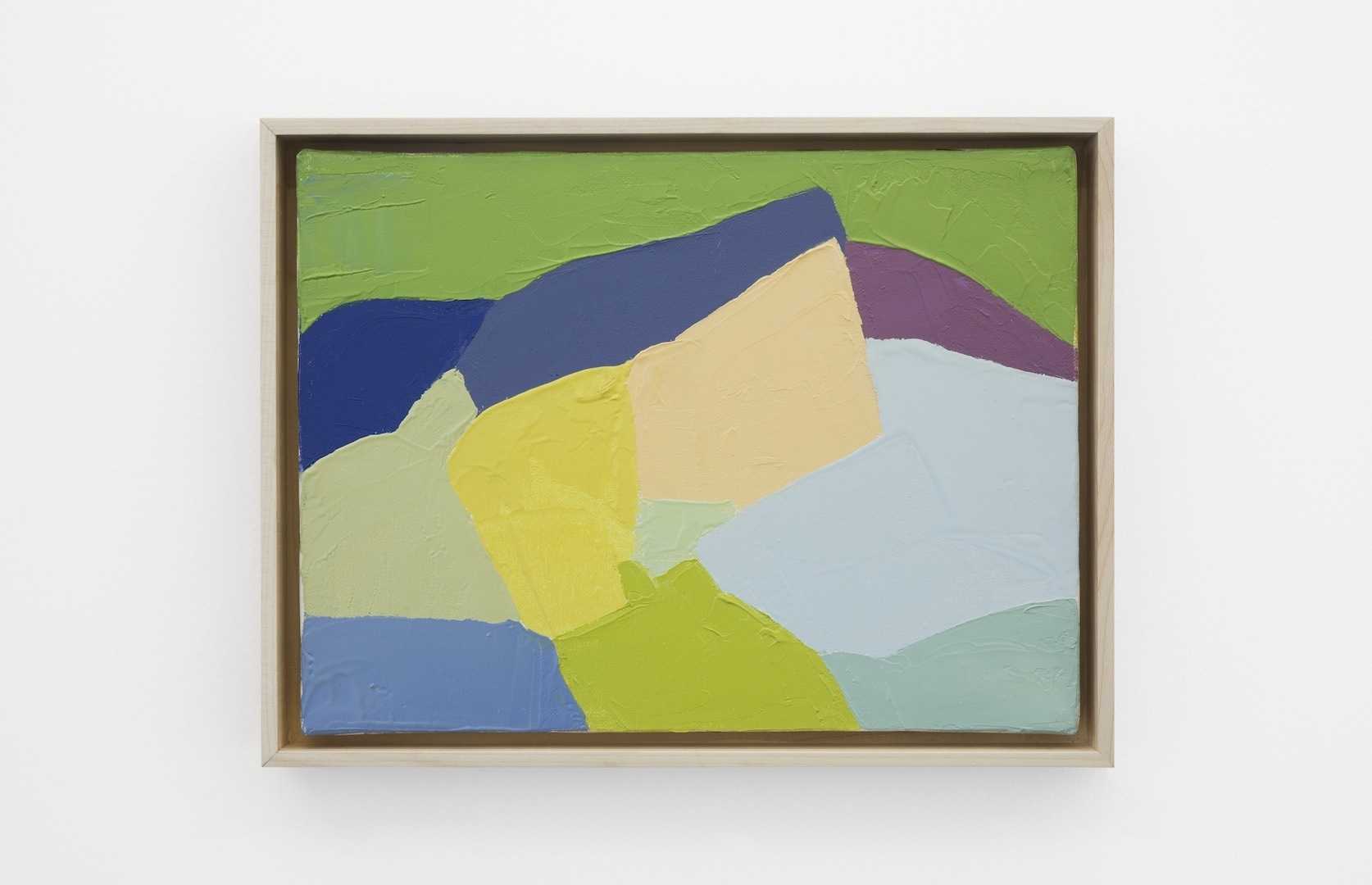 ["untitled" (2000-05). Copyright Etel Adnan.]
["untitled" (2000-05). Copyright Etel Adnan.]
Echoing Klee’s theory of order she asks, “Do colors have the power to break the Time barrier, and carry us into outer spaces, not only those made of miles and distances, but those of the accumulated experiences of life since its beginning or unbeginning?”
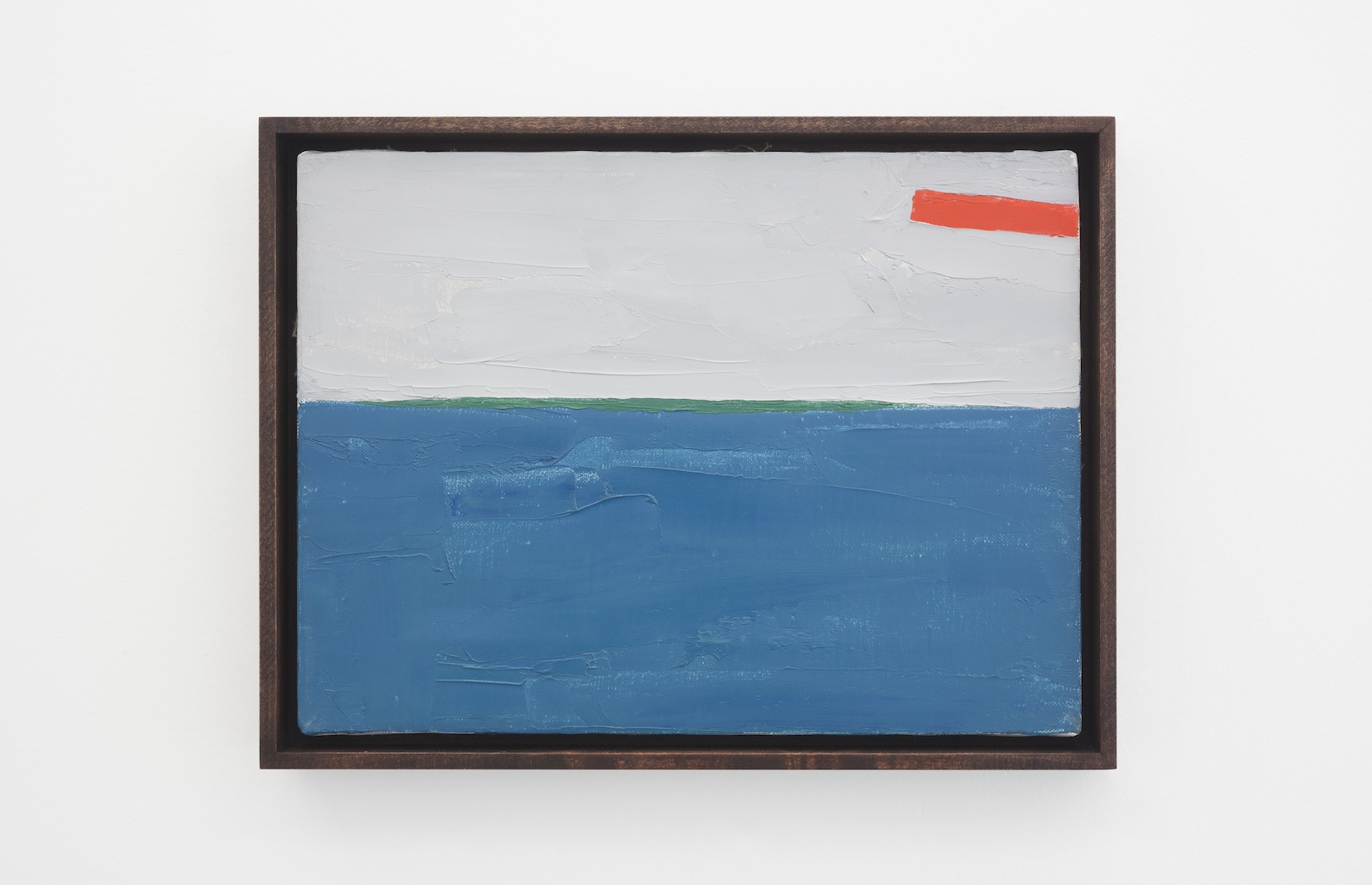 ["untitled" (2000-05). Copyright Etel Adnan.]
["untitled" (2000-05). Copyright Etel Adnan.]
Her paintings compel the viewer to believe so.
Her words function in a similar way and at times one wonders if it wasn’t through “Perception” that she arrived at such lyricism in writing. Marie Rose, the heroine of her celebrated novel, often demonstrates such clarity. The strength of the newly released Sea and Fog (Nightboat Books: 2012) lies in its interlaced transcendental imagery: the elements coalesce with history, color is infinite, and man must confront his inevitable end. The cover of this latest book of prose and poetry, like many of Adnan’s literary works, contains one of her paintings—a seascape in variations of blue. A thick fog settles over cool and blackened water within its borders, masking the artist’s signature above, while a gradient ocean takes on the shape of Mount Tamalpais.